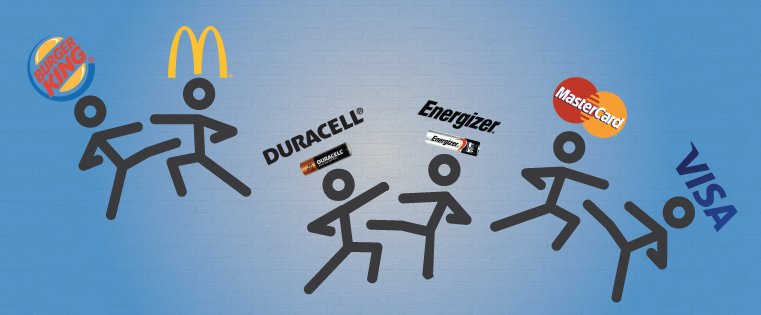 Imagine you’re on a deserted island, and you’re hungry with no food. Do you cast a cumbersome net to catch what you can, hoping that you’ll bring in a scrumptious fish among all the shells, seaweed and other questionable sea life? Or do you throw spears so you can catch and eat the exact fish that you need?
Imagine you’re on a deserted island, and you’re hungry with no food. Do you cast a cumbersome net to catch what you can, hoping that you’ll bring in a scrumptious fish among all the shells, seaweed and other questionable sea life? Or do you throw spears so you can catch and eat the exact fish that you need?

We experience sensory overload on an almost daily basis, and brand advertisers have come to realize that in order for their advertising to resonate, it has to be relevant and targeted toward specific audience demographics. In other words, advertisers need to cast fewer nets and throw more spears. Digital place-based media (DPBM) presents an ideal way to do this in a highly efficient manner. DPBM refers to the use of ads and other relevant content on specialized digital display networks with significant audience dwell time out of the home — while they’re in purchasing mode.
Given its mass scale and ability to reach consumers in a contextually relevant and captive setting, DPBM can deliver tailored content to a broad base of consumers. When factoring in audience demographics (age, race, location, etc.) and the various consumer behaviors of these demographics while they’re out living their lives — shopping, dining, and socializing — DPBM can extend its benefits by segmenting its audiences and delivering highly targeted content.
An example of this strategic segmentation can be found in specific targeted advertising networks, such as those geared towards Hispanics and male millennials (males between the ages of 18 and 34). These two audiences are at the forefront of consumer trends, and with their increasing buying power, they prove to be valuable audiences. Here are some specific considerations for how to target these (and other) segments and how DPBM can effectively place the right message in front of the right people at the right time.
Communicate With Your Targets With Relevant Means.
Providing messaging and content that demonstrates an understanding of what’s important to a particular demographic is a strong way to emotionally connect with your audience. Additionally, it is important to determine when it’s advantageous to advertise in English and when to use the audience’s native language (such as Spanish) in order to create a deeper connection. For example, Hispanics tend to shop as a family, and this can include extended family members like grandparents, cousins, siblings, etc. As such, ads targeting this demographic need to communicate to families and address family concerns and activities, like budgetary constraints and frequent parties or large gatherings.
The male millennial, on the other hand, likes to be at the forefront of new trends and tries the latest new products. They are likely to watch a new movie on opening day or purchase a new gadget or device before it becomes mainstream. They also tend to be heavy mobile users while shopping and exploring, so using DPBM networks to activate a mobile campaign in conjunction with the advertisement provides a natural transition to stay in front of these fast-moving consumers (more on that later).
Understand Your Target’s Shopping Behaviors and Respond Accordingly.
As mentioned above, the Latino population tends to shop as a family. Additionally, they tend to enjoy immersing themselves in the store atmosphere, so place-based media advertising is a great way not only to deliver targeted content but also enhance their in-store experience. Research has shown that Hispanic consumers also like to touch and feel products before they purchase, and they typically judge a product by the quality of its packaging. All of these factors should be considered when creating advertising content targeted for this segment.
Given the male millennials’ dominant use of mobile devices, as well as their tendency to interact and share information on social networks, place-based media advertisements should compel them to interact with their phone — like cast a vote in a poll or tap into their love of sports and connect your message to a sports quiz. Once this interaction takes place, they then can share that action with their social connections, further amplifying your messages. Additionally, this segment of consumers is all about being first to try the latest and greatest, as already mentioned, so be sure your campaigns give them the impression of being at the forefront of something new and amazing.
Know Where Your Target Audiences Are Concentrated.
When you’re throwing spears rather than casting a net, you need to know where your target demographic resides — and shops. The Hispanic audience tends to be concentrated in areas like Los Angeles and other parts of California, the Southwest (like Texas and other border states), as well as the northeast (e.g., New York, New Jersey, Connecticut, etc.). Male Millennials are more heavily concentrated on both the Western and Eastern sides of the country, primarily in urban centers. A targeted place-based media campaign will need to take location information into account in order to be most effective.
In addition to geographic locales, also know where your target consumers tend to shop – whether it’s big-box retail, high-end stores, fast food or quick-service restaurants, convenience stores, etc. Ensuring your ads (and the DPBM network) appear in these places will be essential to the success of your campaign, so it is important to find networks that provide the scale to deliver in these specialized locations.
The above suggestions will be critical as you sharpen your spears and formulate campaigns targeting consumer segments, rather than tossing nets at the general population









